The large black sailor was naked in the middle of a roped-off area below decks, and he was none too happy.
"He kept saying 'Not my boots, too. My wife just bought them for me.' But they made him take them off anyway, and he was just there, naked. Then they made him scrub," recalled Maurice Enis, navigator of the USS Ronald Reagan, one of the Navy's newest aircraft carriers.
"They gave him this really abrasive stuff that we use to clean the hull of the ship. It's sort of like liquid sandpaper. And he had to scrub all over while everyone watched. Then he walked over to the sink and rinsed it off, then came back and stood while they ran the Geiger counter over him. He had to keep doing it till the Geiger counter was quiet. Then it was my turn."
There was a dark turn to Operation Tomodachi, the massive search and rescue effort launched March 11, 2011, off the northern coast of Japan which had been ravaged by an earthquake and giant tsunami. The combined natural disasters left some 20,000 Japanese dead and the coastal infrastructure destroyed. Tomodachi, the Japanese word for "friend", was an 80-day mission requested by the Japanese government and coordinated by the US State Department and the Department of Defense. The DoD quickly mobilized its 63 Japanese bases and called in the USS Ronald Reagan, carrying 5,500 sailors and Marines, along with its Strike Group consisting of four destroyers -- The Preble, McCampbell, Curtis Wilbur, and McCain -- the Cruiser USS Chancellorsville, and several support ships.
But the rescue mission quickly detoured down a dangerous, unchartered path. The earthquake had cracked Unit 1 of the Fukushima Daiichi nuclear reactors, and the tsunami had knocked out all power to the safety systems controlling Units 1 through 4. Control of the mission was expanded to include the Nuclear Regulatory Commission and the Department of Energy.
The fuel in Units 1 through 3 was quickly melting down. The fuel in Unit 4 had been offloaded to the spent fuel pool -- which was located above the reactor itself -- due to a planned refueling. By March 15, explosions had blown the roofs off and the walls out of all four reactor buildings and radiation was spewing into the air.
There was no power to circulate water in any of these buildings, so the Japanese had to improvise. They borrowed high powered pumping trucks from the Americans and poured water onto the buildings, let it run through the spent fuel pool and reactors, and out the bottom, where it flowed into the ocean. All the while, however, the Tokyo Electric Power Company and the Japanese government sought to minimize the radiological disaster. TEPCO would declare there was little or no radiation when, in fact, contamination was high and out of control.
There were some 70,000 American service members and their families in Japan and Defense officials were worried that they might all have to be evacuated. Family members were evacuated from Yokosuka Naval Air Base, 188 miles south of Fukushima, when radiation was detected in increasing amounts there. It was that detection which convinced American officials that the Japanese were not being honest. By calculating the amount of radiation that must have been released in order for Yokosuka to be threatened, NRC officials correctly deduced that despite Japanese assurances, the reactors had been breached.
But the overriding concern was for the Americans in the land based installations -- the men and women of Operation Tomodachi were overlooked. And at times, they were just two miles off the coast of Fukushima as helicopters went back and forth, seeking survivors and transporting food and supplies.
The Americans at sea were on their own.
A Growing Fear
For Quartermaster Enis, the wait for decontamination was a completely unexpected turn of events. The quartermasters had two main responsibilities: navigating the ship, and operating the signal flags attached to the mast, which let others in the fleet know what the flagship was doing. Enis had been ordered to bring down the American flag, which had been flying atop the mast for two weeks, and bring it to the Captain's quarters.
"I brought it down," he said, "and folded it respectfully and tucked it under my right arm, next to my body. I carried it inside, put it away, and thought nothing of it."
After dinner, he was walking past a sensor "and the alarms all went off," he recalled. "And they began yelling at me not to touch anything or anyone and to go straight to the decontamination area."
There was a line in the cordoned-off "decon" area with men and women waiting to be checked. But Enis didn't have to wait; he was already marked and was ushered to the front, where a tableau was playing out under the watchful eyes of the Reagan's executive officer and senior medical officer. The naked sailor in the center of the room was given a towel to cover himself and left. They called Enis.
"They had told us that there was no radiation," said Enis. "When they started putting up the stations along the ship to check for radiation they didn't say why they were there. They checked my boots and nothing happened. Then they checked my hands and the machine goes crazy."
"The guy doing the checking freaked out and said to 'Step away from him!' Next thing I know, I got plastic bags on my arms and they are telling everyone to get away from me. I almost had an anxiety attack because they were treating me like I had the plague. They weren't touching me. They were yelling commands to where I had to walk and what I had to do. I had to scrub my hands and my right side with this gritty paint remover and it took off a couple of layers of skin."
Enis was not told, then or later, exactly what his radiation reading was. They did say his was the highest level recorded among personnel on the ship. At that time, however, the radiation level was not his main concern. Fear of the unknown consumed his attention.
The officers were watching him and barking orders. His fellow sailors -- men and women -- silently watched him from the edges of the decon station while waiting their turn to be checked for radiation.
"It was pretty embarrassing," said Enis. "You're half-naked and getting yelled at and scrubbing in front of all sorts of people and I'm scared because they are not telling me what is going on. The way they acted, I thought I must be in real trouble. And it scared the crew. None of us were experts on radiation. You ask yourself are you going to die? Are you going to get cancer? Are you going to be shipped off? I didn't know if my skin was going to bubble up or something. I didn't know anything."
The Navy had been assured that radioactive particles could be washed away with soap and water. That was partly true. Particles emitting alpha rays, the weakest sort, could be washed away from smooth surfaces. Those emitting beta rays, which are stronger, can also be washed away as long as there are no breaks in the skin providing pathways to enter the body. The abrasive paint-removing soap used by the Navy, however, removed the top layers of skin. In addition, the carrier's flight deck is not made of smooth plastic or glass. Merely scrubbing would not remove particulates from such porous surfaces.
The Reagan's crew had been assured that there was no radiation to worry about over the open ocean and, as the ship's navigator, Enis had been led to believe that the radiation was a distinct plume that they could avoid. It was now apparent that the radiation cloud was everywhere, and avoiding it would not always be possible.
On the quarter mile long deck there was another alarming note.
"I had a digital watch," said quartermaster Jaime Plym, "and it suddenly stopped working. Somebody made a crack that radiation would do that. There were five or six of us on deck and everyone looked at their watches -- and all the digital watches had stopped. There was one that was real expensive, and it wasn't working either.
"We were laughing at first. But then that petered out and we just sort of looked at each other because it wasn't funny anymore."
And those who worked below decks had even less information to go on. The jet mechanics, said Jennifer Micke, had most of the aircraft parts brought down to them for testing. There was limited access to the huge hangar elevators.
"They set up a hatch watch," Micke recalled, "which was people from the air squadrons sitting in folding chairs and making sure no one went on deck through the catwalk. They were to enter and exit only through the front of the ship because they wanted to reduce the level of contamination in the rest of the ship.
"So they would pretty much sit there all day and yell at people who went the wrong way."
Micke knew the jets on the flight deck were in a radioactive environment. "Every time we came off the flight deck," she said, "some guy would have to scrub your boots and toss them in a pile and take them away. When you were going up on deck you would put on a pair of boots over your regular boots so they would have to throw those away. Then we had the chemical, biological, radiological suits that we had to put on.
"We were issued masks and canisters, but we never ended up actually using them."
How well these precautions worked is an open question. An aircraft carrier is a complex industrial town and, at any given time, major and minor pieces of equipment are broken. Some of the damage came from normal wear and tear, and other damage came from accidents.
During Operation Tomodachi, the effectiveness of putting rags under the doors to limit the spread of air-borne radiation was compromised by the fact that there were broken doors, broken door jams and seals and, in some places, water-tight doors which had been removed and taken to the Reagan's machine shop for repairs. On paper the USS Ronald Reagan was a series of closed compartments. In reality, it was more of a floating catacomb with the air flowing freely through it.Continue reading at Energy Matters.
